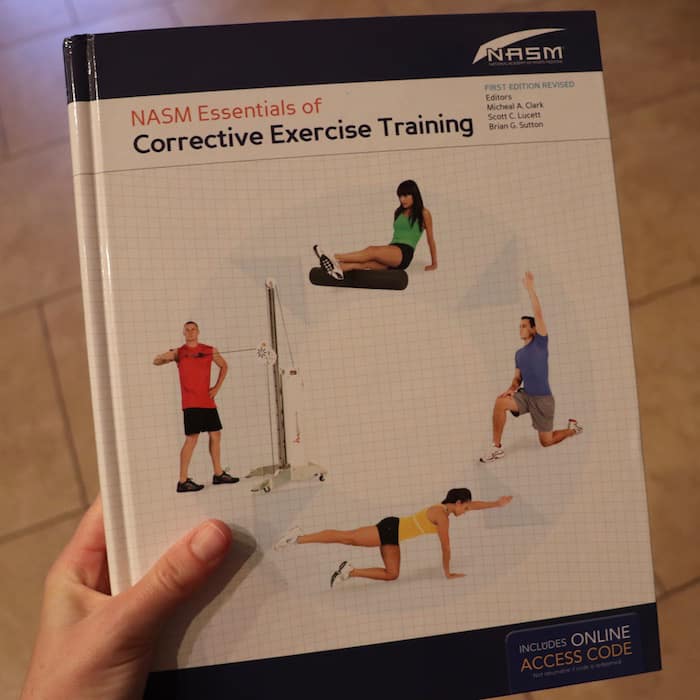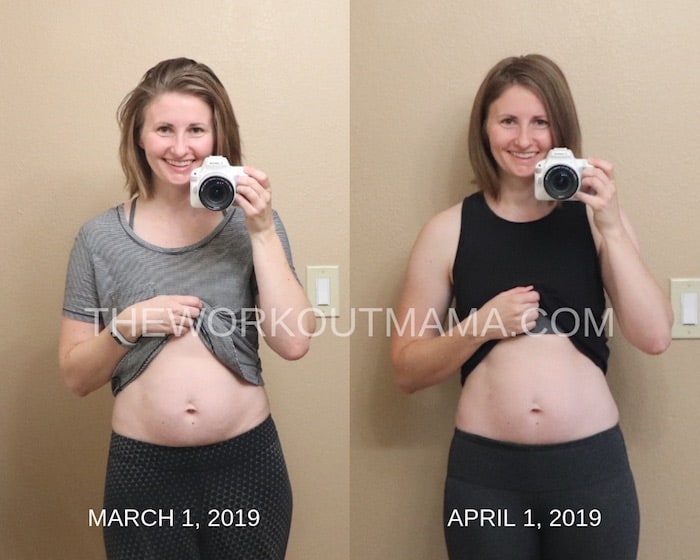I recently passed my National Academy of Sports Medicine (NASM) Corrective Exercise Training Exam. Two years ago I purchased this course in order to fulfill my Personal Training continuing education credits with NASM. The course was online and included a textbook for $576.

Before the book was even mailed I remembered I had taken another course that would count towards renewing my certification. I decided to wait to take the NASM-CES until my next renewal date, which would be later this year. And that is when I discovered something I didn’t know about NASM certifications…
Buyer Beware: Your NASM Course Has An Expiration Date
This month when I went into my NASM account and online portal I discovered I could not access the NASM-CES course content. Upon emailing NASM I discovered that I only had access to the course material and exam for 365 from the purchase date 🙁. I went back through all the paperwork and checked online and could not find any documentation stating that the course would expire. If I had known about the expiration date I would have studied and taken the test at the time of purchase instead of holding it until my next renewal.
On the phone with NASM I learned I could renew the course materials to gain access to the modules and final exam for $99. During the call I explained that I had never accessed the course materials online and was granted a 30 day extension at no cost. If I needed more time after the 30 days I would need to pay the $99 to keep studying and take the final 100 question exam.
Thank you to NASM for granting the extension! I only put this in the review to let others know that if you plan to buy a course or have purchased one complete it within a year of purchase. It is a bummer that the course material will be removed from my portal because there is a wealth of knowledge and information. I would love to continue to go back and refer to the videos and lectures at later dates.
It was 13 days from the time my extension was valid to when I took the exam. While I don’t recommend rushing this course it is possible to successfully complete it in a short amount of time if you have a good working knowledge of functional anatomy of the major muscles and human movement science.
Why Corrective Exercise? Who Can Benefit From Corrective Exercise?
I have always been fascinated with how the body works and enjoy learning to improve how the body moves and functions. Corrective exercise is the process of identifying neuromuscular dysfunction and then creating a plan to implement a corrective strategy.
Everyone can benefit from corrective exercise. In fact while I was going though the course work I did a few assessments on myself and was able to evaluate certain muscle compensations on my own body. I have started to implement what I have learned into my own workouts and I am already noticing a difference in my stride and squat.
While exercising is great it is even better to be exercising using the correct muscle groups for a squat, row, pushup, etc.. Many times people don’t even know they are overcompensating for a weak muscle or muscle group. It can be hard to near impossible to determine this until an assessment is done to determine what muscles are over/under active. Once that is done a plan can by implemented to inhibit and lengthen the overactive muscles, strengthen the underactive muscles, and then retrain the entire function of all muscles to work correctly together by integrated dynamic movements.
What You Will Learn With NASM-CES
You will learn how to discover movement compensations using a variety of assessments and how to implement a plan to correct these compensations. Here is a breakdown of the sections in the book.
SECTION 1: Introduction to Corrective Exercise
- Chapter 1: The Rational for Corrective Exercise
- Chapter 2: Introduction to Human Movement Science
- Chapter 3: An Evidence Based Approach to Understanding Human Movement Impairments
SECTION 2: Assessing for Human Movement Disfunction
- Chapter 4: Health Risk Assessment
- Chapter 5: Static Posture Assessment
- Chapter 6: Movement Assessments
- Chapter 7: Range of Motion Assessments
- Chapter 8: Strength Assessments
SECTION 3: The Corrective Exercise Continuum
- Chapter 9: Inhibitory Techniques
- Chapter 10: Lengthen Techniques
- Chapter 11: Activation & Integration Techniques
SECTION 4: Corrective Exercise Strategies
- Chapter 12: Corrective Strategies for Foot and Ankle Impairments
- Chapter 13: Corrective Strategies for Knee Impairments
- Chapter 14: Corrective Strategies for Lumbo-Pelvic-Hip Complex Impairments
- Chapter 15: Corrective Strategies for Shoulder, Elbow, Wrist Impairments
- Chapter 16: Corrective strategies for Cervical Spine Impairments
Tips On How To Pass The Exam
Read the book. Obviously this one is pretty straight forward. But if you aren’t reading the material you most likely won’t be as successful when you take the exam.
Buy a hard copy of the textbook. More on this below.
Review all the online course material and watch the videos. Like I said above, I did all this in 13 days between my kids napping and after they went to bed at night. I was averaging about three hours of course work a day.
Take the practice exam. The practice exam helps so much. You can see the types of questions asked and also how the questions will be worded.
Make sure you know the movement compensations for the overhead squat assessment. This is a major portion of the exam. Knowing overactive and underactive muscles for each compensation will be highly beneficially.
Make the most of your exam time. You have 90 minutes to answer 100 questions. I went through the entire test and answered only the questions I was positive I knew the answer. Then I went back and answered any question I had left blank (about 20). I ran out of time answering those questions and had about 6 questions unanswered when the timer ran out. However you decide to take the exam just be sure you don’t get stuck on a question. I passed the first time using this method and it worked for me.
What I Liked & Didn’t Like About The Course
My favorite part of the course was the lectures and cueing videos. The cueing instruction videos are super engaging and contain great information. The cueing videos are super high quality and crystal clear.
The lecture videos are old and grainy. For the cost of the program this surprised me. I did however like the lecture videos because they cohesively bring together all the main points in each chapter in a more tangible way.
There are two entire chapters in the course that focus on range of motion assessments and strength assessments. They contain so much information but NASM recommends not to use any of these techniques unless you have had further training. These techniques would and should require much further training in order to properly and safety implement them with clients.
NASM-CES is expensive. When I purchased this back in 2017 it came with a book. Now if you purchase the course you have to pay extra for the book. If you decide to buy this course get the book. I personally do better with a hard copy of a textbook when studying material.
The information is fantastic and I would like to be able to reference it in the future. In my opinion if I paid for a course I paid to be able to access the information now or at a later date.
There you have it! I am glad I passed the exam in such a short amount of time and also grateful to not be out of pocket anymore money :).















